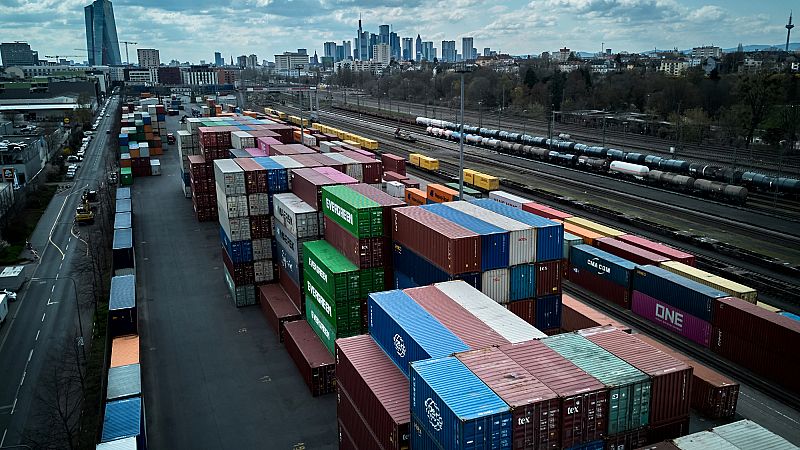
Donald Trump’s announcement of sweeping 20% tariffs on European exports has prompted economists to slash their eurozone growth forecasts, warning of a looming global slowdown with sharp regional fallout.
Experts broadly agree that the tariff shock will weigh on consumption and investment, while inflation concerns are likely to take a back seat as deteriorating growth dynamics dominate.
This shift strengthens the case for the European Central Bank (ECB) to accelerate its rate-cutting cycle, with the likelihood of an April move increasingly priced in.
Banks see rising stagnation risks for eurozone amid tariff shock
ABN Amro economists, led by head of macro research Bill Diviney, now expect a significant slowdown in European economic activity.
“The EU has been hit with a 20% tariff. We expect this to drive a sharp fall in exports to the US over the coming months, and we are significantly downgrading our 2025 growth forecast on the back of this,” the team said.
According to the Dutch bank, quarterly growth is expected to remain close to zero in the near term, with a strong likelihood of contraction, although frontloading effects may obscure the precise timing.
“We expect the lowest point for growth to occur in the third quarter,” Diviney said. “A recovery should begin towards the end of the fourth quarter and gain momentum in 2026.”
He added that any rebound will likely depend on several mitigating factors, including the possibility of partial tariff relief from the US, trade diversion to alternative markets, and government intervention if economic conditions deteriorate sharply.
On inflation, ABN Amro anticipates the tariff shock and resulting decline in global demand to increase the risk of inflation undershooting the ECB’s 2% target, particularly due to downward pressure on energy prices.
Bank of America economists echoed these concerns, estimating the US tariffs could reduce global GDP growth by 50 basis points, with US GDP potentially hit by up to 1.5 percentage points, and China and the euro area by around one percentage point and 40–60 basis points respectively.
“For the Euro Area, if tariffs are not reduced, this could easily remove 40–60bp of growth in the next few quarters, including some surgical retaliation on the EU side,” Ruben Segura Cayuela said.
Bank of America believes the inflationary effects of retaliation by the EU would be relatively negligible, estimating that a 10% rise in tariffs on US imports would raise headline inflation by only around five basis points, and core inflation by less than 10 basis points.
“Ultimately, GDP growth losses would easily dominate that first-round effect,” Cayuela added.
The tariffs, he noted, further solidify expectations for monetary easing: “Tariffs increase even further our conviction on an April cut.” The bank continues to forecast back-to-back rate cuts, reaching a 1.5% deposit rate by September.
Carsten Brzeski, global head of macro at ING, compared the tariff move to a “tsunami” that recalls the protectionism of the 1930s.
“A US 20% reciprocal tariff on the European Union will hurt. It's worsened the eurozone's short-term outlook,” he warned.
But the damage, Brzeski stressed, goes beyond trade volumes.
“Think of the secondary effects on confidence these tariffs will already have on European consumers and businesses. Holding back consumption and investments looks likely. This would keep economic growth in the eurozone at a snail’s pace.”
ING has lowered its eurozone GDP forecast for 2025 to 0.6%, from 0.7%, and 2026 to 1.0%, from 1.4%.
Goldman Sachs’ European economics team, led by Sven Jari Stehn, sees mounting downside risks.
“Our baseline growth forecast of 0.8% in 2025 already assumed a total trade-related GDP hit of 0.7%, and is below consensus and the March ECB staff projections,” they noted.
“Because the tariffs announced were larger than expected elsewhere in Europe and Asia, and given the strong language from the US administration, the risk of escalating trade tensions has increased,” the team wrote, warning of a potential technical recession in a downside scenario.
Goldman’s inflation projections also face downward revisions, due to a stronger euro and a likely disinflationary impulse from redirected trade flows, especially from Asia. The bank now sees further justification for a series of ECB cuts, expecting the deposit rate to reach 1.75% by July, and calling an April cut “very likely.”







